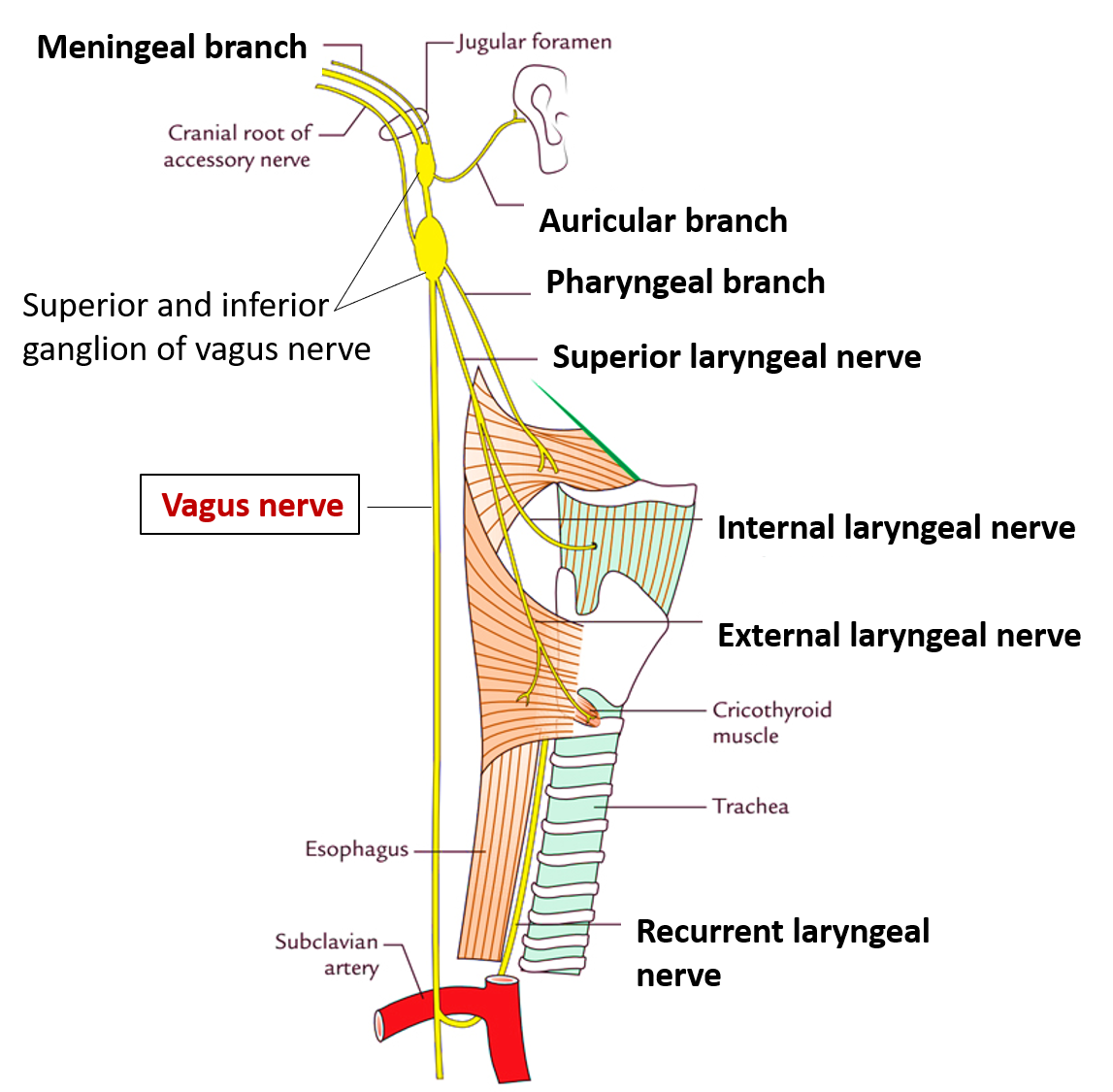Advertisements
Introduction
Vagus nerve is the 10th cranial nerve. It is a mixed (sensory and motor) nerve.
Origin: Its nuclei viz. nucleus ambiguus, dorsal motor nucleus of vagus and nucleus of tractus solitarious are located in the medulla oblongata.
Name the nuclei, functional components and structures supplied by vagus Nerve .
Following are the nuclei, functional components of vagus nerve:
| Functional component | Nuclei | Structures innervated |
|---|---|---|
| SVE (Special visceral efferent) | Nucleus ambiguus | Muscle derived from 4 th & 6 th branchial arches. |
| Muscles of palate (except tensor palatini), pharynx(except stylopharyngeus) and larynx (except cricothyroid). | ||
| GVE (General visceral efferent) | Dorsal motor N. of vagus | Parasympathetic fibers to heart , bronchial tree and GIT (till the junction of right 2/3 rd and left 1/3 rd of transverse colon). |
| GVA (General visceral afferent) | Dorsal motor N. of vagus | Carry general sensations from mucus membrane of pharynx, larynx, trachea, GIT (till the junction of right 2/3 rd and left 1/3 rd of transverse colon).. |
| SVA (Special visceral afferent) | Nucleus of tractus solitarius | Carry taste sensation from posterior most part of tongue and epiglottis. |
| GSA (General somatic efferent) | Spinal nucleus of trigeminal | General sensations from the skin of auricle. |
Describe the course of vagus nerve.
- It emerges from the ventral surface of medulla oblongata posterior to olive below the glossopharyngeal nerve.
- It leaves the cranial cavity through the jugular foramen.
- It then descends in the neck within the carotid sheath.
- Enters the thorax by passing through the thoracic inlet.The right vagus nerve enters the thorax by crossing in front of the right subclavian artery, while the left vagus nerve enters the thorax by passing between the left common carotid and left subclavian arteries.
Enumerate the branches of vagus nerve.
Branches in the neck:
- Meningeal branch: enters the cranial cavity via the jugular foramen to supply the dura mater of posterior cranial fossa.
- Auricular branch to the external acoustic meatus and adjacent part of auricle.
- Pharyngeal branch to pharyngeal plexus. Through pharyngeal plexus it supplies all the muscles of pharynx (except stylopharyngeus) and all the muscles of soft palate (except tensor palatini).
- Superior laryngeal nerve which divides into:
- External laryngeal nerve: it supplies cricothyroid muscle.
- Internal laryngeal nerve: it innervates mucosa of larynx above the vocal folds, posterior most part of tongue and epiglottis.
- Recurrent laryngeal nerve: all the muscles of larynx except cricothyroid and mucosa of larynx below the vocal fold.
- Superior and inferior cervical cardiac branches that supply heart through cardiac plexus.

Applied Aspects
Lesion of vagus nerve
It leads to:
- Hoarseness of voice and cadaveric position of vocal cord (on the affected side) due to paralysis of laryngeal muscle.
- Loss of ipsilateral gag reflex: vagus nerve forms the efferent limb of the gag reflex.
- Dysphagia
Stimulation of the auricular branch of vagus nerve
In syringing of the ear, the auricular branch of vagus nerve may get stimulated which can cause reflex coughing, vomiting and lowing of heart beat.
